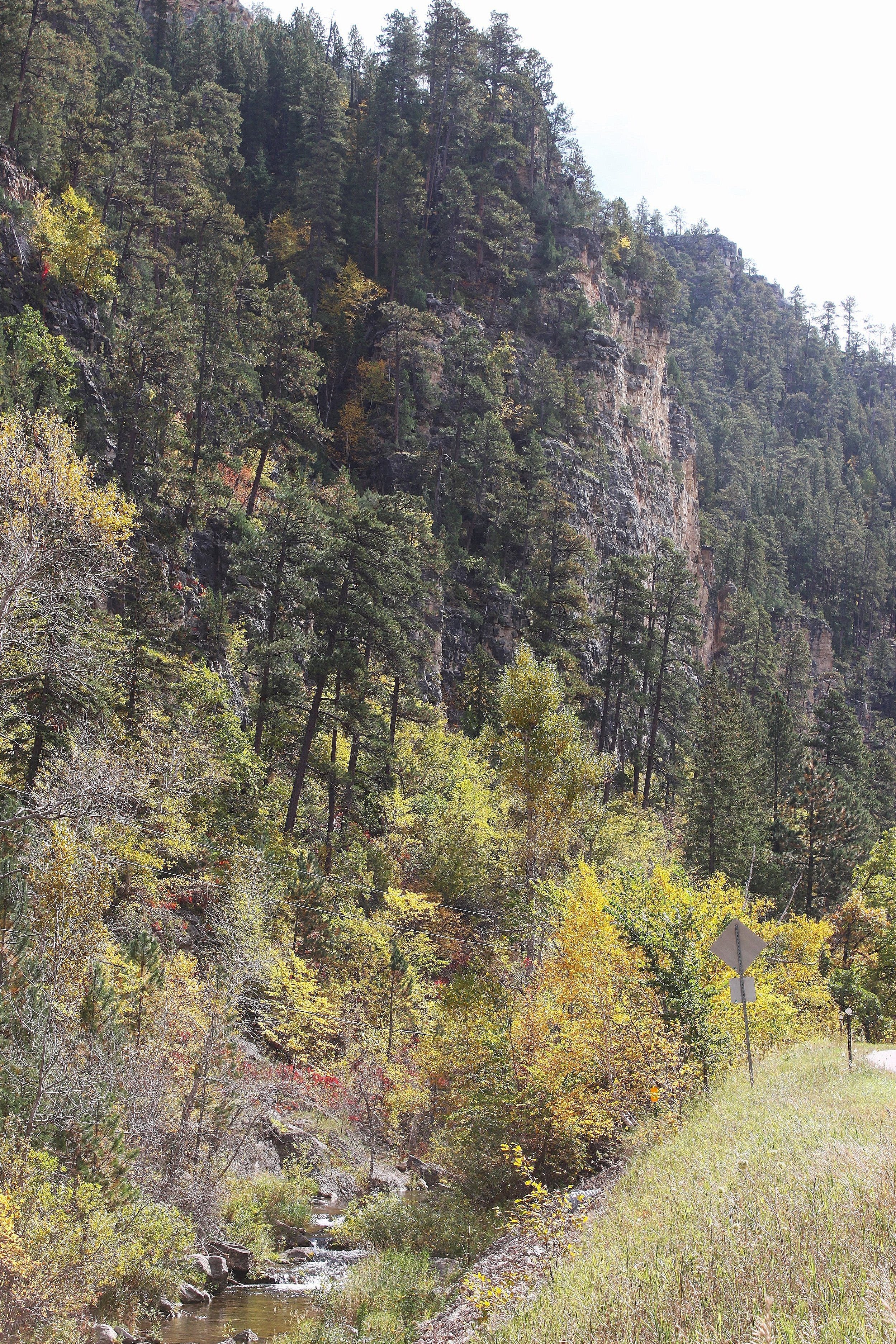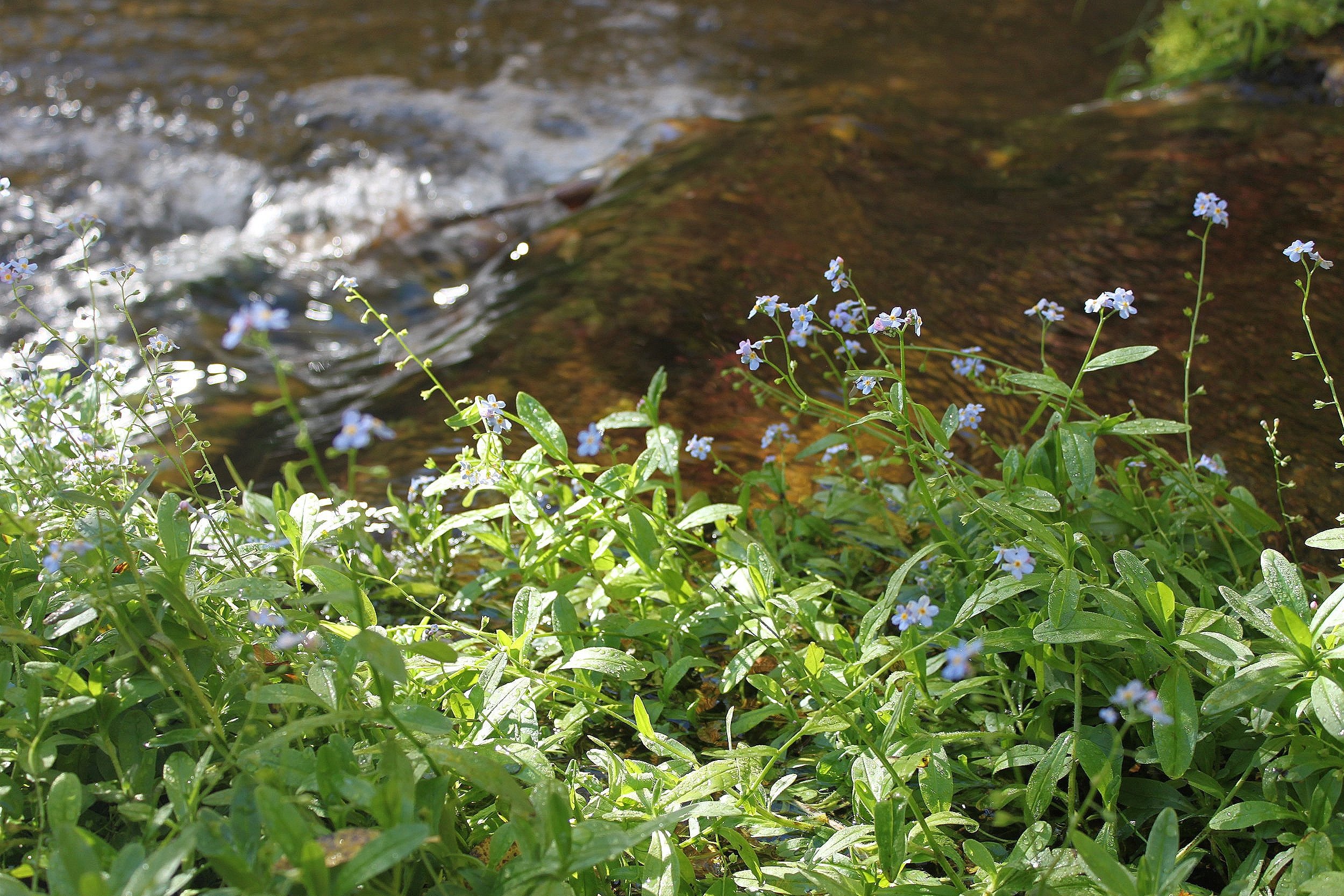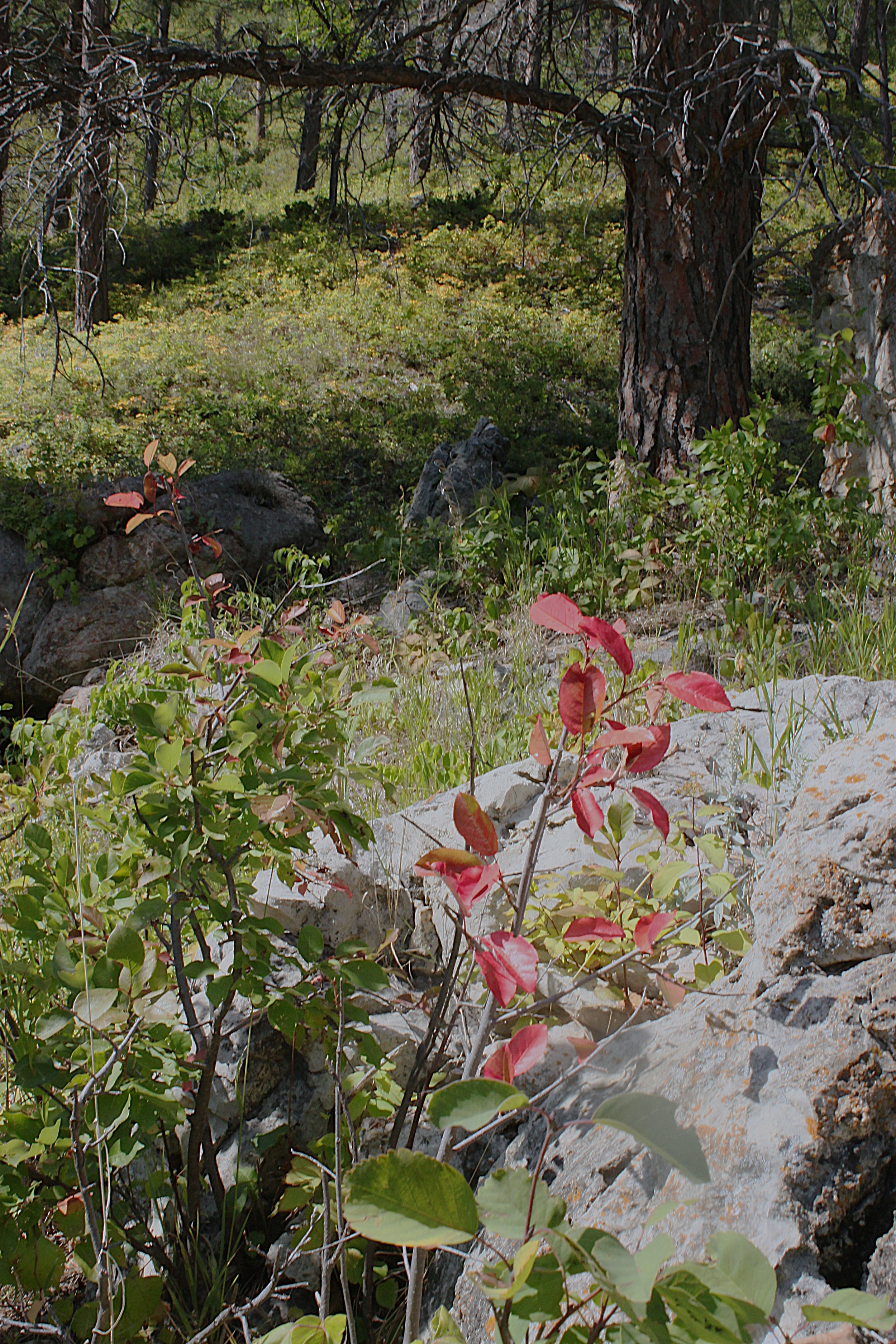September 3, 2024
Color Change: 8% (Very Low)
This is the first Spearfish Canyon Leaf Report of 2024. Foliage is at 8% towards its full autumn color change. After a hot and dry Labor Day weekend, Spearfish Canyon still looks more summer than fall. Historically, we’ve seen the “peak” or most vibrant fall colors in the Canyon between September 23 and October 3.
The real story today is found in the “understory.”
Color Change: 8% (Very Low)
This is the first Spearfish Canyon Leaf Report of 2024. The Canyon foliage is at 8% towards its full autumn color change. After a hot and dry Labor Day weekend, Spearfish Canyon still looks more summer than fall. The real story is found in the “understory.”
The understory is the space between the forest treetops and the forest floor. This week in the Canyon you’ll observe yellow spreading dogbane. Watch for dogbane around Calamity Gulch. The dogbane that have morphed into their late summer golden color are especially striking up close where you can observe their beautiful red stem. I’ve noticed yellow dogbane since August. This could mean an earlier than normal color change in the Canyon, but we will have to see what September has in store. Historically, we’ve seen the “peak” or most vibrant fall colors in Spearfish Canyon between September 23 and October 3.
Also, in the Canyon understory this week look for purple-red dogwood near Long Valley Picnic Area. There are some random, early-maturing birch and aspen branches starting to turn yellow, but overall the deciduous trees are still green.
As we wait for the first signs of fall, let’s explore some Canyon landmarks I’ll be pointing you to throughout the season as special leaf watching spots.
First up, Split Rock! Split Rock is one of the first landmarks you’ll come to as you follow the Spearfish Canyon Leaf Watching Map. What’s happening above (and below!) Split Rock?
Split Rock is about 3 miles from the intersection of Colorado Blvd. and Hwy 14A as you travel into the Canyon from Spearfish. The Rock straddles both sides of the Scenic Byway. Split Rock was blasted through in the late 1800s to make way for a railroad. The triangular rock on the east side of the byway is perhaps most recognizable as the landmark for Split Rock. Pine trees almost seem to climb up Split Rock’s upward angle there. In the next few weeks you’ll see birch, oak, cottonwood, and elm all come into their splendor of fall colors near Split Rock. Today I saw purple dotted gayfeather standing tall and asters low to the ground.
While the beauty above ground will catch your eye, it’s also worth considering what is happening underground at Split Rock. The actual rock type on Split Rock is exposed limestone that is part of the Madison Aquifer, one of the most important aquifers in the Black Hills. Madison Limestone, like what we see at Split Rock, has karst features. This means the carbonate in the limestone (which was once deposited by seawater) can dissolve, leading to fractures in the rock. Within these fractures, water flows through the rock and connects with surface and groundwater resources.
In the next Leaf Report we’ll examine a favorite Canyon stop, Bridal Veil Falls.
September 28, 2023
It’s peak leaf watching time in Spearfish Canyon! The Canyon foliage has reached 100% of its autumnal color change. Most trees are now at their most beautiful and brightest colors. It's not too late to enjoy Spearfish Canyon’s fall beauty! Download the Leaf Watching Map to follow along with the spots mentioned in this leaf report.










Spearfish Canyon Leaf Report
September 28, 2023
Color Change: 100% (High)
Leaf Drop: Low to Moderate
It’s peak leaf watching time in Spearfish Canyon! The Canyon foliage has reached 100% of its autumnal color change. Most trees are now at their most beautiful and brightest colors. It's not too late to enjoy Spearfish Canyon’s fall beauty! Download the Leaf Watching Map to follow along with the spots mentioned in this leaf report.
As you’re driving into the Canyon, before the Scenic Byway Information Pull-Off, look east and you’ll see a preview of what’s to come along the byway. Here and throughout the Canyon, the bursts of yellow deciduous trees show off the “depth” of the Canyon’s trees. The trees grow deep in the rocky crevices, and layer by layer the trees remind us why the hills look almost black with dense evergreens.
The yellows of the Canyon’s birch and aspen are vibrant along the Canyon’s top ridges. The ruby red shrubs and vines that leaf peepers will notice in the Canyon this week are sumac and woodbine. These shrubs and vines are accompanied by glowing grasses along the eastern side of the byway. In just a few weeks we’ll likely see those same grasses poking out of our first seasonal snow.
Savoy and the area around the Latchstring, Spearfish Canyon Lodge, and Roughlock Falls continue to be stunners with abundant golden leaves. Yellow tree-lined roads greet leaf peepers throughout the Canyon. There are certainly a few twists and turns on the byway where the leaves will continue to transition this weekend, and the colors will deepen. Areas to watch that are still green and transitioning to their fall colors include Kissing Rocks to Long Valley Picnic Area and the sumac west of Bridal Veil Falls.
The weather forecast is warm and mild over the weekend. I expect minimal leaf drop until mid-week with rain forecast on Tuesday, Oct. 3.
This is the last Spearfish Canyon Leaf Report of 2023. It’s been another beautiful year, but I have a theory based on what I’ve observed over the last three years of leaf watching. This year I kept waiting for the purple dogwood around Long Valley Picnic Area to deepen and reveal its fall colors. While the dogwood is a sight to see, it’s still not as deeply colored as I’ve seen in past years. My theory is that in a year like 2023 with more precipitation, especially spring and summer precipitation, some Canyon foliage colors may not be as bright. As I’ve mentioned in past reports this year, a fall rain will make the foliage colors pop for a brief time (great for taking photographs). But overall, my theory is that a dry, hot summer produces more vibrant fall colors in Spearfish Canyon, while a cooler, wet summer mutes the colors. That being said, I had more mountain goat sightings this year than ever before (going into the Canyon the same number of times). So maybe the goats are feeling friendlier after a wet summer.
These are theories I will watch for in future years. Until then, enjoy fall 2023 in Spearfish!
September 25, 2023
It’s officially fall! Spearfish Canyon is at 80% of its peak leaf color change. The deeper you drive into the Canyon, the more vivid colors you will see. Savoy and Roughlock Falls are spectacular sights right now. The golden hues of the birch and aspen seem to cascade amongst the Canyon rocks at Savoy. This is a great spot to view a season in transition, where many trees are at peak beauty while others will still reveal their colors throughout this week. Take advantage of the car pull-off spots as you enter Savoy to take in the fall splendor in all directions.







Color Change: 80% (High)
Leaf Drop: Low to Moderate
It’s officially fall! Spearfish Canyon is at 80% of its peak leaf color change. The deeper you drive into the Canyon, the more vivid colors you will see. Savoy and Roughlock Falls are spectacular sights right now. The golden hues of the birch and aspen seem to cascade amongst the Canyon rocks at Savoy. This is a great spot to view a season in transition, where many trees are at peak beauty while others will still reveal their colors throughout this week. Take advantage of the car pull-off spots as you enter Savoy to take in the fall splendor in all directions.
While hiking to Roughlock Falls on Saturday, I was reminded that each of the Canyon’s trails has its own unique treasures from unique creek views and sounds, to distinctive foliage and wildlife. Today at Iron Creek Trailhead, for example, my fellow leaf peepers (my son and aunt) spotted a chipmunk while I spied purple forget-me-nots near the waterway. We marveled at the golden birch lining the trail and sumac covering the castle-like rocks.
According to our calendars, the fall season started at 12:50 a.m. on Saturday, Sept. 23. Why is it that our fall equinox and peak leaf watching season seem to coincide? The fall equinox on Saturday was the exact moment when the sun’s rays shone over the equator. On the equinox, we have equal hours of daylight and dark night (12 hours each). The amount of daylight contributes to the extraordinary changes we see in the leaves in late September, when the fall equinox occurs.
There are three factors that influence autumn leaf color: Leaf pigments, length of the night, and the weather. Now that we are past the equinox, the Northern Hemisphere will get less hours of daylight. Longer and cooler nights in the fall signal to the trees to begin their biochemical processes to prepare for winter. Chlorophyll is what gives the leaves their green color and is necessary for photosynthesis, when sunlight is used to make leaf food. In the autumn, chlorophyll production slows down, then stops, and is eventually destroyed. When this happens, the leaf pigments become unmasked revealing their fall colors.
It's not too late to enjoy Spearfish Canyon’s fall beauty! Download the Leaf Watching Map to follow along with the spots mentioned in these leaf reports.









